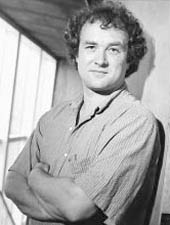Hao, L. N., Tiganis, T., Tonks, N. K., Charbonneau, H. (November 1997) The noncatalytic C-terminal segment of the T cell protein tyrosine phosphatase regulates activity via an intramolecular mechanism. Journal of Biological Chemistry, 272 (46). pp. 29322-29329. ISSN 0021-9258
Abstract
Human T cell protein tyrosine phosphatase (TCPTP) is a nontransmembrane enzyme, the first of the protein tyrosine phosphatase family to be cloned, Alternative mRNA splicing results in variation in the sequence at the extreme C terminus of TCPTP and generates a 45-kDa form (TC45) that is targeted to the nucleus and a 48-kDa variant (TC48) associated with membranes of the endoplasmic reticulum, In this report, we assessed the role of the C-terminal, noncatalytic segment of TCPTP in regulating activity, concentrating primarily on the TC45 variant, We have demonstrated that limited tryptic proteolysis of TC45 releases first a 42-kDa fragment, then a 33-kDa catalytic domain, Using reduced carboxyamidomethylated and maleylated lysozyme as substrate (RCML), the catalytic domain displays 20-100-fold more activity than the full-length enzyme, Analysis of the time course of limited trypsinolysis revealed that proteolytic activation occurred following cleavage of a protease-sensitive region (residues 353-387) located at the C terminus of TC45, The activity of truncation mutants illustrated that removal of 20 C-terminal residues was sufficient to activate the enzyme fully, The 33-kDa catalytic domain, but not the full-length enzyme, was inhibited in a concentration-dependent manner by addition of the noncatalytic C-terminal segment of TC45, A monoclonal antibody to TCPTP, CF4, which recognizes an epitope located between residues 350 and 363, was capable of fully activating TC45. These data indicate that the noncatalytic segment of TC45 contains an autoregulatory site that modulates activity via a reversible intramolecular interaction with the catalytic domain, These studies suggest that the C-terminal noncatalytic segment of TC45, and possibly TC48, may not only direct the enzyme to different subcellular locations but may also modulate activity in response to the binding of regulatory proteins and/or posttranslational modification.
Actions (login required)
 |
Administrator's edit/view item |

